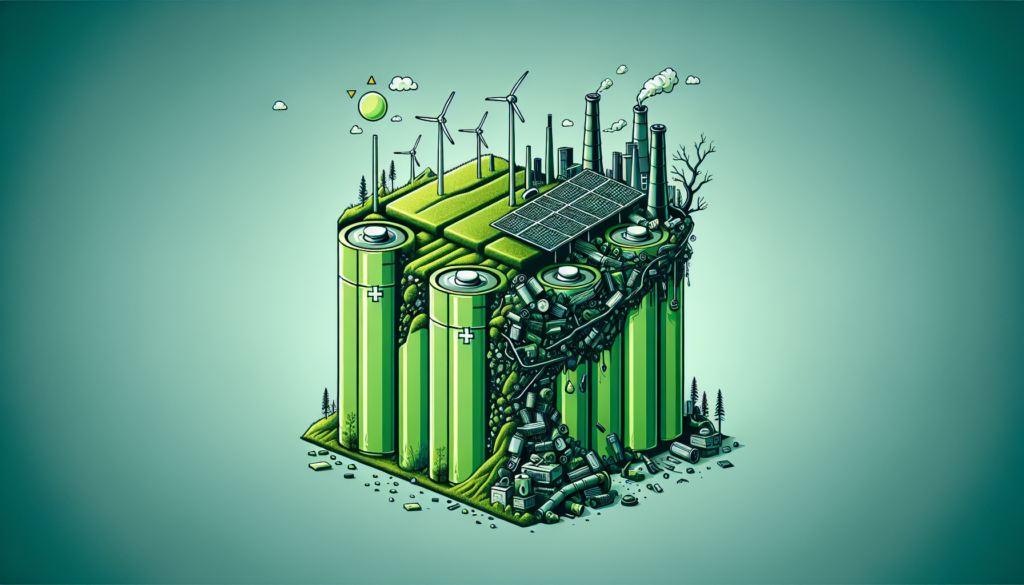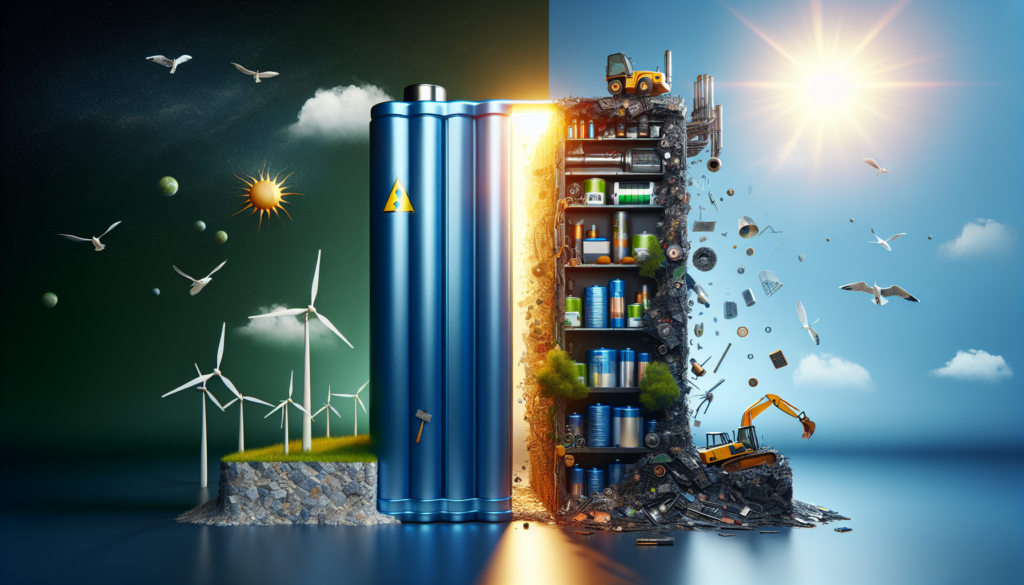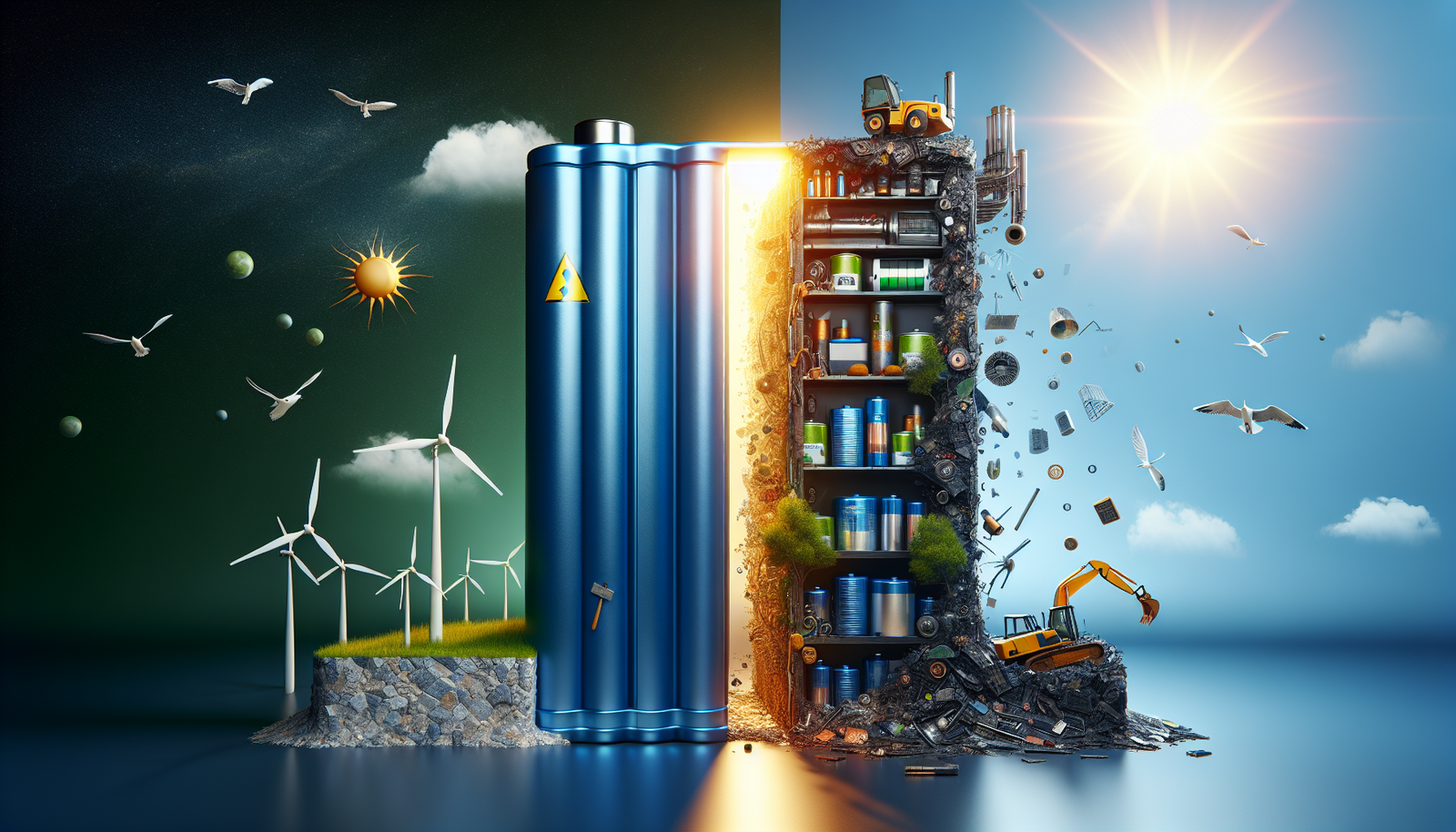In the unpredictable world we live in, being able to rely on something as essential as batteries can feel like a saving grace. However, the reality is that batteries may not be the climate savior we all envision them to be. While they offer convenience and a temporary solution to power outages, it’s important to recognize their limitations and the potential consequences they have on our environment. By understanding these factors and exploring alternative energy sources, we can better prepare ourselves for the challenges that lie ahead and contribute to a more sustainable future. So, let’s delve into the complexities of batteries and empower ourselves with knowledge for a brighter tomorrow.
Introduction
In the quest for renewable energy sources and a sustainable future, batteries have emerged as a key technology for energy storage. With the ability to store electricity generated from renewable sources like solar and wind, batteries are often hailed as the climate saviors we need. However, it is important to understand the limitations and challenges associated with batteries to fully harness their potential and explore alternative energy storage technologies. In this article, we will delve into the various limitations of batteries, inefficiencies in the energy storage process, the dependence on rare earth metals, challenges of scaling up battery production, alternative energy storage technologies, the role of batteries in a sustainable energy transition, the need for diversification in energy storage solutions, and balancing the climate and environmental impacts.
1. The Limitations of Batteries
1.1 Short Lifespan
One of the main limitations of batteries is their relatively short lifespan. Batteries degrade over time due to repeated charging and discharging cycles, which can significantly impact their performance. This limited lifespan necessitates frequent battery replacement, leading to increased costs and environmental impact.
1.2 Limited Storage Capacity
Batteries also have a limited storage capacity, which constrains their ability to store large amounts of electrical energy. While advancements have been made to increase battery capacity, it remains a challenge to store energy on a scale that can meet the demands of an entire grid or power a city for an extended period.
1.3 Environmental Impact
The production, use, and disposal of batteries have environmental implications. The extraction of raw materials, such as lithium and cobalt, can lead to habitat destruction and pollution. Additionally, the disposal of batteries at the end of their life cycle can contribute to electronic waste, which poses its own set of environmental challenges.

2. Inefficiencies in the Energy Storage Process
2.1 Energy Conversion Losses
During the energy storage process, batteries experience energy conversion losses. These losses occur due to factors such as resistance, heat generation, and chemical reactions within the battery. It means that not all the energy put into the battery can be retrieved when it is discharged, leading to inefficiencies in the overall storage process.
2.2 Chemical Degradation
Batteries rely on chemical reactions to store and release energy. However, these chemical reactions can degrade over time, reducing the battery’s capacity and overall performance. The degradation of battery chemistry can be influenced by factors such as temperature, overcharging, and depth of discharge.
2.3 Charge and Discharge Efficiency
Efficiency is a crucial aspect of energy storage systems. Batteries can suffer from lower charge and discharge efficiency, resulting in energy loss during these processes. This reduced efficiency can impact the overall effectiveness of batteries as energy storage solutions, as it implies less energy is available for actual use.
3. Dependence on Rare Earth Metals
3.1 Supply Chain Vulnerabilities
Many batteries, especially lithium-ion batteries, rely on rare earth metals such as lithium and cobalt. The extraction and production of these metals often face supply chain vulnerabilities, as they are concentrated in a few countries. This dependence on a limited number of suppliers can create economic and geopolitical risks, potentially leading to price fluctuations and supply disruptions.
3.2 Environmental and Human Rights Concerns
The mining and processing of rare earth metals can have significant environmental impacts. It can result in deforestation, water pollution, and the release of toxic chemicals into the environment. Furthermore, there are concerns about human rights violations associated with the production of these metals, including child labor and unsafe working conditions.

4. Challenges of Scaling Up Battery Production
4.1 Cost and Infrastructure Requirements
Scaling up battery production to meet the growing demand for energy storage faces challenges related to cost and infrastructure. The production of batteries on a large scale requires significant investments in manufacturing facilities, research and development, and the establishment of an extensive supply chain. These costs and requirements can impede the widespread adoption of batteries as an energy storage solution.
4.2 Recycling and Waste Management
As the use of batteries continues to increase, the importance of proper recycling and waste management becomes paramount. Batteries contain hazardous materials that can harm the environment if not disposed of correctly. Developing effective and efficient recycling processes for batteries is crucial to mitigate environmental impacts and minimize the waste generated from the production and use of batteries.
5. Alternative Energy Storage Technologies
5.1 Hydrogen Fuel Cells
Hydrogen fuel cells are an alternative energy storage technology that converts hydrogen gas into electricity through an electrochemical process. Fuel cells offer advantages such as high energy density, long lifespan, and zero emissions. However, their widespread adoption faces challenges related to hydrogen production, storage, and infrastructure development.
5.2 Compressed Air Energy Storage
Compressed air energy storage (CAES) involves storing energy in the form of compressed air. When electricity is needed, the compressed air is released to drive a turbine and generate electricity. CAES can provide large-scale energy storage and has a long lifespan. However, it requires suitable geological formations for underground storage and can face efficiency challenges during the compression and expansion processes.
5.3 Thermal Energy Storage
Thermal energy storage systems store energy in the form of heat. This can be achieved through various methods such as molten salt storage, phase change materials, or heated water tanks. Thermal energy storage offers the advantage of high energy density and the ability to provide both electricity and heating/cooling. However, it requires efficient insulation and can face challenges in maintaining consistent temperatures over extended periods.
6. The Role of Batteries in a Sustainable Energy Transition
6.1 Complementary Role to Renewable Energy
Despite their limitations, batteries play a crucial role in enabling the integration of renewable energy sources into the grid. They allow for the storage of excess energy generated during periods of low demand and the discharge of stored energy during peak demand, balancing the supply and demand of electricity. Batteries can help reduce reliance on fossil fuels and accelerate the adoption of renewable energy technologies.
6.2 Integration with Smart Grids
The development of smart grids, which incorporate advanced communication and control technologies, is essential for maximizing the potential of batteries and other energy storage solutions. By integrating batteries into smart grid systems, energy usage can be optimized, and grid stability can be enhanced. Smart grids enable dynamic charging and discharging of batteries based on real-time electricity prices and renewable energy generation.
7. The Need for Diversification in Energy Storage Solutions
7.1 Reducing Reliance on a Single Technology
To address the limitations and challenges associated with batteries, it is crucial to diversify energy storage solutions. Relying solely on batteries can lead to vulnerabilities and limitations. Exploring a combination of different technologies, such as hydrogen fuel cells, CAES, and thermal energy storage, can provide a more robust and resilient energy storage infrastructure.
7.2 Investing in Research and Development
Investing in research and development (R&D) is key to advancing energy storage technologies and overcoming the existing limitations. R&D efforts should focus on improving battery performance, increasing energy storage capacities, and exploring new materials and technologies for energy storage. By investing in R&D, we can unlock new breakthroughs and drive innovation in the energy storage sector.
8. Balancing the Climate and Environmental Impacts
8.1 Considering the Full Life Cycle
To fully assess the climate and environmental impacts of batteries, it is essential to consider their full life cycle. This includes evaluating the environmental footprint of battery production, use, and disposal. By considering factors such as raw material extraction, energy consumption during manufacturing, and proper recycling, we can better understand the overall environmental implications of batteries.
8.2 Assessing the Trade-offs
There are often trade-offs to consider when choosing energy storage technologies. While batteries have limitations and environmental impacts, they offer advantages such as portability, flexibility, and relatively high efficiency. Assessing the trade-offs between different energy storage technologies is crucial to determine the most suitable option for specific applications and prioritize sustainable solutions.
10. Conclusion
Batteries have emerged as a vital technology for energy storage in the transition to a sustainable future. However, they come with limitations such as short lifespans, limited storage capacity, and environmental impacts. It is important to explore alternative energy storage technologies like hydrogen fuel cells, compressed air energy storage, and thermal energy storage to diversify the options available. To fully harness the potential of batteries, they need to be integrated into smart grids and used in conjunction with other storage solutions. Balancing the climate and environmental impacts requires considering the full life cycle of batteries and assessing trade-offs between different energy storage technologies. With continued research and development, we can overcome the limitations of batteries and build a resilient and sustainable energy storage infrastructure for the future.

